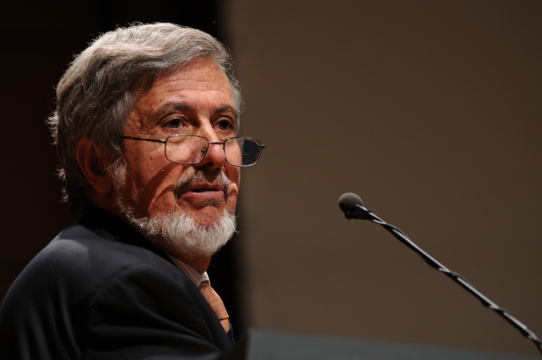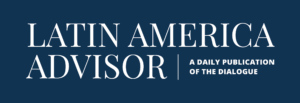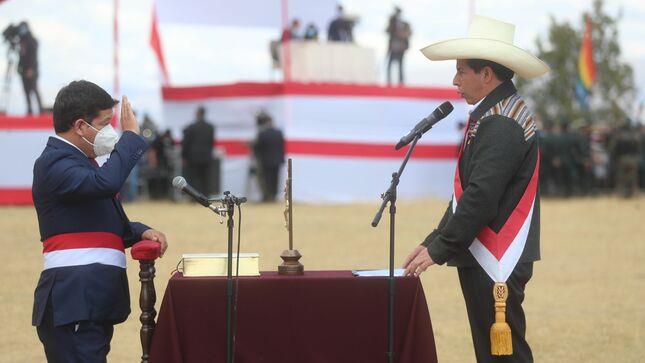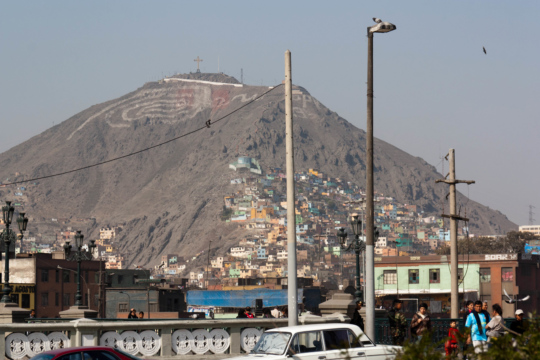
Impact of Lower Commodity Prices on Latin American Growth
With the recent decline in commodity prices, why have some countries have fared better than others?
A Daily Publication of The Dialogue
New Peruvian President Pedro Castillo’s selection on July 29 of far-leftist Guido Bellido as his prime minister dashed the hopes of some centrists that Castillo would name a moderate to lead his cabinet. The next day, Castillo named center-leftist Pedro Francke, a former World Bank economist, as his finance minister. What do Castillo’s selections of Bellido and Francke, and other cabinet members, say about how the new president intends to govern and his priorities in office? What are the main actions Bellido and Francke are expected to take? To what extent will Castillo’s cabinet selections make it easier, or more difficult, for him to work with Peru’s Congress?
Julio Carrión, associate professor and associate chair of the Department of Political Science and International Relations at the University of Delaware: “President Castillo’s cabinet is split on a range of issues. Ministers coming from his party have been questioned for their radicalism and thin resumes and tend to be socially conservative. Ministers representing Juntos por el Perú and Frente Amplio, two left-wing parties supportive of Castillo in the runoff, defend women’s and LGBTQ rights. Prime Minister Guido Bellido is on record as holding homophobic and misogynistic views. While Bellido now disavows them, he argues that Peruvians are not ready for ‘shocking’ cultural change. The cabinet also harbors serious dissent over the issue of constitutional change and economic policy. Bellido and Vladimir Cerrón, the ruling party’s general secretary, want to collect signatures to convoke a constitutional referendum, a legally dubious move. Finance Minister Pedro Francke and Justice Minister Aníbal Torres endorse Castillo’s original position to work with Congress on any constitutional reform. While Bellido talks of creating new state-owned enterprises, Francke stresses the need to close the fiscal deficit. These tensions result in a perception that Castillo is a weak president who is not quite in charge of his own government. To confront such perceptions, Castillo has concluded that open conflict with Congress is his best strategy (especially when some right-wing forces are already strategizing his removal from the presidency). Castillo hopes Congress will reject his cabinet and deny Bellido a vote of confidence. If Congress puts forward a vote of no confidence, it will no doubt be in a weaker position, since any future no-confidence vote will bring its own dissolution. This is a risky strategy that could backfire on Castillo. If Congress votes to confirm, it preserves its strength and Castillo ends up with a problematic cabinet. If Congress rejects the cabinet, the perception of Castillo’s weakness as president could become reality as an emboldened Congress may emerge.”
Mariana Zepeda, Latin America analyst at FrontierView: “Pedro Castillo’s term is off to a chaotic start; his controversial cabinet picks, particularly Guido Bellido, a presumed Shining Path apologist and admirer of the Cuba regime, sent shockwaves through markets, toppling Peruvian stocks and pushing the sol to near-record lows. Pedro Francke’s nomination as finance minister is a positive signal, particularly now that Julio Velarde, Peru’s longstanding central bank head, has agreed to stay on. Castillo’s other cabinet selections will weigh on his political future. These nominations have already lost him the support of key actors, including Partido Morado, even though Castillo will need the center-left to pass any policies in an opposition-dominated Congress. Some think Castillo has ulterior motives in nominating such contentious far-left candidates: Congress will need to approve Castillo’s cabinet, but two ‘no’ votes could open a path for Castillo to dissolve what is likely to be an antagonistic Congress, potentially facilitating conditions for him to pursue rewriting the Constitution through a constituent assembly—a goal he barely budged on, even as he seemed to moderate his stance ahead of the June runoffs. If that is the case, Castillo is playing a dangerous game; key actors (including the business community, media and the armed forces) are not on his side, and his popular support is limited. Recent polls suggest he is starting his presidency with a modest 39 percent approval rating. This could put his political future at risk. As we have seen in recent years, the threshold for impeaching a president in Peru is low. Either way, these developments further heighten tensions between the legislature and the president. We can expect significant political turmoil during Castillo’s initial months in office, with risks of a governability crisis rising considerably if Castillo stays on this path.”
Katrina R. Heimark, assistant professor and researcher at the University of Lima: “During the 2021 presidential campaign, Pedro Castillo faced enormous opposition from some of the country’s most powerful political and economic actors. Rather than perform goodwill gestures toward the centrist and center-left political leaders who helped Castillo moderate his image in the wake of the first round of the election, which arguably contributed to his victory in the runoff, Castillo’s cabinet nominations—particularly that of Guido Bellido as prime minister—are a defiant message that this is a strongly leftist administration. The Peruvian press has been largely alarmist regarding Bellido’s nomination as a sign that Castillo is controlled by extremist elements within Perú Libre. However, Pedro Francke’s nomination as finance minister is a sign that Castillo is aware of the importance of moderation. Francke is likely to maintain prior macroeconomic policies and therefore promote economic stability. But he also aims to reduce inequality through increased state investment in social programs, health care and education. Unfortunately, the makeup of Castillo’s cabinet reflects his lack of political experience—a more moderate nomination for the premiership may have fostered some goodwill for his administration, whose principal aims are to tackle the rampant social and economic inequality that plagues Peru. Bellido’s nomination surely portends further political instability, as Congress must formally approve his cabinet, which is unlikely. A lack of political allies could prove fatal for Castillo, who faces an opposition Congress that may be set on impeachment.”
Jose E. Gonzales, managing partner at GCG Advisors: “Pedro Castillo’s proclamation as Peru’s president took six weeks from election day on June 6 due to unproven ‘fraud’ allegations, which forced a political transition of just eight days. Due to the intense pressure of those weeks, Castillo was quite shy in taking any initiatives that assumed he won the presidency. That, his obvious inexperience in matters of state and his now-evident reservedness made the appointment of his cabinet a convoluted two-day process. Seventy-one percent of Castillo’s ministers were born in Peru’s regions, not Lima. That compares to an average of 26 percent in the previous seven administrations. Guido Bellido was born and educated in Cuzco, developing all his professional and political career there. A founding member of Perú Libre, Bellido is allegedly who proposed Castillo as the party’s ideal candidate for president. Francke’s appointment was a concession to an alliance with Juntos por el Perú and the liberal left, which has three ministers in the cabinet. Bellido should focus on President Castillo’s proposed constitutional assembly, while Francke should keep the economy on its 30-year stability track, implementing social policies within broader fiscal spending. While Francke should have a fluid relationship with Congress, Bellido, unless he moderates substantially, might be a burden for the president if he is confirmed.”
Francisco Durand, professor of political science at the Catholic University of Peru: “Prime Minister Bellido and Finance Minister Francke are the leading figures of a cabinet that expresses a balance between the main forces of the Castillo coalition. Its composition shows the importance of Perú Libre, the party led by Vladimir Cerrón, a power factor compensated by Castillo’s own appointments and those of Juntos por el Perú. Thus, the government’s first priority is to keep together this rather fragile alliance and demonstrate that ‘new faces’ who were before marginalized from power are now in charge. The cabinet needs congressional approval. More than policy initiatives, today the main issue is whether various conservative parliamentary forces in Congress will provide the Bellido cabinet with a confidence vote. This will be a major political test for those forces, which must decide whether to give the president and the cabinet some initial breathing space or start an early confrontation that will eventually lead to an impeachment process. Most of the corporate media and the elite social media associated with these forces see Castillo as unfit for the presidency. So the question is whether Castillo can govern and for how long. Politics prevails over policies, except in the economic arena. Both Bellido and Francke had a first round of talks with Chinese investors and Roque Benavides, a mining tycoon closely associated with multinational corporations. The talks complement Francke’s goals to stabilize the markets and control capital flight and currency instability. Another two important economic goals are to increase tax collection and to negotiate with mining investors, hoping to extract more revenues in order to finance social goals now that mineral prices are on the rise.”
 The Latin America Advisor features Q&A from leaders in politics, economics, and finance every business day. It is available to members of the Dialogue’s Corporate Program and others by subscription.
The Latin America Advisor features Q&A from leaders in politics, economics, and finance every business day. It is available to members of the Dialogue’s Corporate Program and others by subscription.
With the recent decline in commodity prices, why have some countries have fared better than others?
Peru’s growing urban middle class is one of the country’s greatest assets, but it also brings political and governance challenges.
In Peru, it is generally known that a better quality education could build citizens, who are better prepared for the democracy and modern and flexible workers, who would help reduce poverty. However, over the last decade- as well during the previous one- many factors have prevented the improvement of the…
 Peru’s new president, Pedro Castillo (R), swore in his prime minister, Guido Bellido (L), on July 29. // Photo: Peruvian Government.
Peru’s new president, Pedro Castillo (R), swore in his prime minister, Guido Bellido (L), on July 29. // Photo: Peruvian Government.
